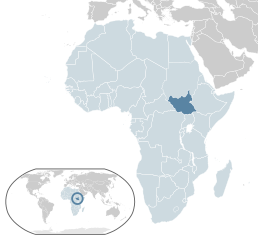Italy entered a new period of political crisis in the familiar… Italian style. For more than ten years, political parties have given the prime ministership to technocrats or to politicians who have not come down to the people to rise to the leadership of the country.
It is a strange system that wants politicians to think they are setting Italy’s course in the background by avoiding taking responsibility in an effort to avoid the political costs involved.
All this is in their imagination, since the results of the polls and especially the elections in Italy show constant reshuffles, with the percentages of the parties changing spectacularly.
The new Italian crisis puts an end to a period of relative stability with Draghi in the prime ministership of the country from February 2021.
The former president of the European Central Bank (ECB) is the best Italy has to offer. His success in the battle for the euro during the European crisis has enhanced his prestige and acceptance. The Germans and the Dutch, who are seen as tough on European resource management and fiscal policy, trust him and are willing to accept some of the peculiarities of the Italian system as long as Draghi is in the spotlight.
The change in the economic and monetary environment is shown by the evolution of the interest rate on the ten-year bond of the Italian Government. In February 2021, when Draghi took office, it fell to 0.5%, while now, at the end of Draghi’s term, it has risen to 3.4%.
The rise in the Italian Government’s borrowing rates is of course not solely due to the developments in Italy, since it also reflects the changes in the international economic environment. However, the political destabilization in Italy and the removal of Draghi from power are expected to drive interest rates even higher.

The reason for the start of the new political crisis
The reason for the start of a new political crisis was the conflict between the parties around the so-called “Assistance Order”, amounting to 20 billion euros. Giuseppe Conte, former prime minister and leader of the Five Star Movement, took the opportunity to challenge Draghi’s proposals by calling for more pro-people measures, such as a bigger increase in the minimum wage.
The Five Star Movement was the big winner of the 2018 parliamentary elections, but now finds itself in a difficult position, as its poll percentage is below 12%. The hardening of Conte’s attitude towards Draghi was exploited by Foreign Minister Dimaio, who proceeded with a large group of senators and parliamentarians to split the Five Star Movement. This particular party began as an expression of the anti-European populism of Pepe Grillo, but then made a pro-European turn contributing with its MEPs even to the formation of the marginal majority in the European Parliament, which ensured the election of von der Leyen to the presidency of the European Commission.
The shift from aggressive populism to Europeanism and the associated responsibility drastically reduced the party’s electoral appeal and caused intra-party conflicts.
The problems of the Five Star Movement are being exploited by Giorgia Meloni, leader of the Italian Brothers party, in order to force early elections in October 2022, speeding up developments, since the end of the five-year term and parliamentary elections are scheduled for April 2023 .
The Brothers of Italy are denounced as a party with neo-fascist roots, but Meloni’s public image is good, she leads the only party not part of Draghi’s governing coalition and polls at 22%, just above the centre-left Democratic Party Party, which is the most consistent pro-European support force for the Draghi government.
The third party in the voters’ preferences is the also hard right-wing League of Salvini. In recent years it had reached polling rates of over 30%, but now hovers around 16% to 18%. In case of early elections, it is most likely that Meloni and Salvini will form the core of the new government coalition. These are two Eurosceptics with little influence in Brussels and less in the governments of the Netherlands and Germany, who are the protagonists in the formulation of European economic policy.
Complementing this curious scene is the 85-year-old Silvio Berlusconi with his political formation Forza Italia. He is Italy’s richest citizen, whose empire controls all three of the country’s most important private television stations. Berlusconi’s ambition is to play a European guarantor role in a coalition government made up of the Brothers of Italy, the League and Forza Italia.
The polling percentages of the Forza Italia party have fallen to 8% but Berlusconi believes that, despite his health problems, he is able to guarantee Italy’s… new European path.
In 2011 he lost the prime ministership after the dynamic reaction of Berlin, Paris and of course Brussels to the lax management of Italy’s public finances. There are no signs that Brussels and European capitals have changed their assessment of his management skills and political accountability. After all, a government dominated by Meloni and Salvini cannot hope for much European understanding.

The enormous political difference and the significance of the confrontation
The ongoing Italian row is, ostensibly, over whether to hold elections in October 2022 or April 2023. The time difference is small, but the political difference is huge. Italy loses Draghi’s guarantee for fiscal stability, reforms and proper utilization of the huge funds of 190 billion euros that the country has received under the European Development Fund, as well as the political support of the European institutions and the most important, from an economic point of view, European capitals.
The political instability comes at a critical time for Italy and the Eurozone. After Greece, Italy has the highest public debt as a percentage of Gross Domestic Product (GDP), at 150%. The amount of debt of 2,700 billion euros worries the markets and scares Brussels.
Another negative characteristic of the Italian economy is the low growth during the last decades. In the twenty-year period 1999-2019, the Italian GDP increased by only 7.9%, while the German one increased by 30.2%, the French one by 32.4% and the Spanish one by 43.6%. Over time, Italy emerged as the big patient of the Eurozone, which leaves no room for new political adventures.
The economy grew at a rate of 6.6% in 2021, after a disastrous 2020 due to COVID-19. For 2022, growth of 3.2% is forecast under certain conditions. Firstly, that the necessary reforms will be made and the necessary measures will be implemented for the smooth flow of the huge resources of the European Recovery Fund. Second, that it will prevent the interruption of the flow of Russian natural gas on which Italy is heavily dependent. If the energy crisis worsens, GDP growth will be limited to a meager 1%.
The Italian economic, political bomb is ready to explode and the consequences are predicted to be huge for the EU.

The European dimension
The ECB is trying to strike a balance between an anti-inflationary increase in key interest rates, which, however, will not cause insurmountable problems for the development of the Eurozone.
The president of the ECB, Christine Lagarde, is on good terms with her predecessor, Mario Draghi, and is trying to find special solutions for countries such as Italy and Greece, which will keep the difference in ten-year government bond spreads within reasonable limits. in order not to test the unity of the Eurozone.
The problem is that Lagarde and her colleagues have gone too far in their assessment of inflationary risk and are under fire from the central bankers of Germany and the Netherlands. The latter are willing to compromise to help Draghi bring economic order to Italy. But they will react strongly if they conclude that Lagarde’s choices facilitate what they perceive as Italian policy and managerial irresponsibility.
The same applies to the governments of the Eurozone countries with a leading economic role. They will accept the extension of fiscal slack in order to support Draghi’s effort, but they will hardly agree to the extension of exemptions and facilities in order to subsidize a doomed political experiment with Meloni, Salvini and Berlusconi.
And if the governments want to turn a blind eye, the public opinion of their countries will not allow them. It is therefore impossible for them to accept to suffer political costs by entering the labyrinth of Italian political life.
Political destabilization in Italy is of extreme importance due to Putin’s aggressiveness and the ongoing war in Ukraine.
Russian troops have already occupied 20%-25% of Ukraine and are continuing their offensive. Economic sanctions and the energy war are currently affecting the European economy more than the Russian one. Putin is becoming increasingly aggressive in managing his energy arsenal. Italy is also suffering from a lack of natural gas, high energy costs, intense inflationary pressures and is facing a winter of popular discontent.
The parties with the polling advantage show quite a bit of understanding of Putin’s strategy and aggressive moves, which will make it even more difficult to negotiate with Brussels and is expected to widen the differences within the EU. against Putin.







